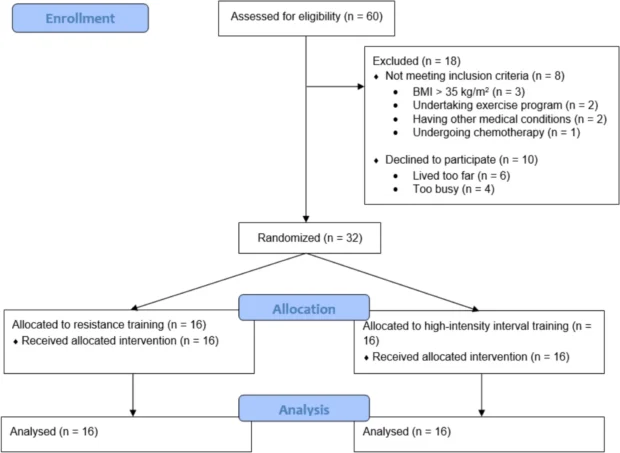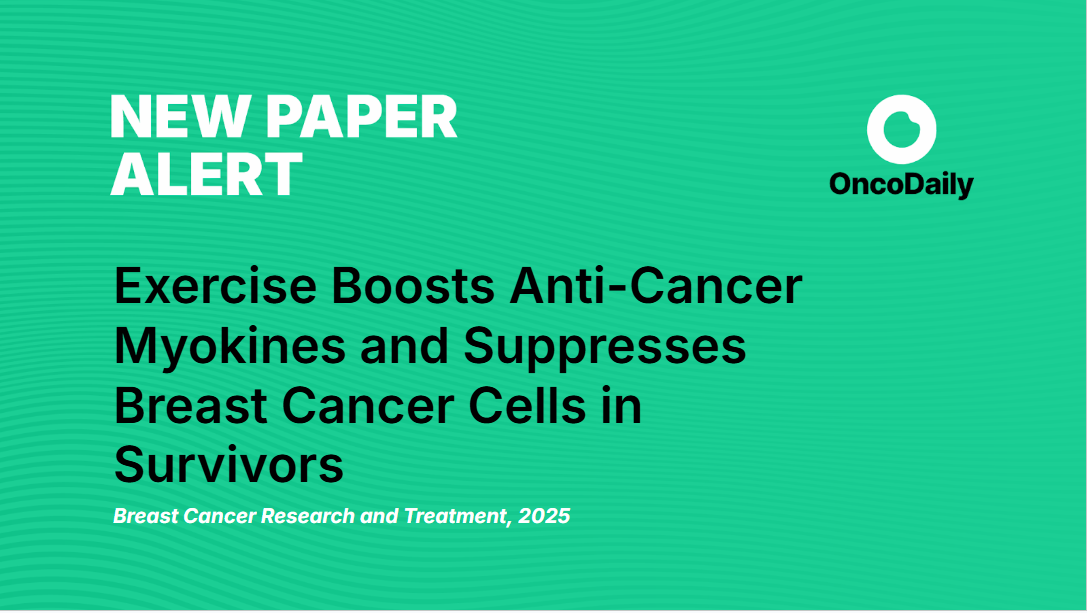Original Study Title: A single bout of resistance or high-intensity interval training increases anti-cancer myokines and suppresses cancer cell growth in vitro in survivors of breast cancer
Authors: Francesco Bettariga, Dennis R. Taaffe, Cristina Crespo-Garcia, Timothy D. Clay, Mauro De Santi, Giulia Baldelli, Sanjeev Adhikari, Elin S. Gray, Daniel A. Galvão & Robert U. Newton
Anti-cancer myokines, signaling molecules released by skeletal muscles in response to contraction (such as IL-6, OSM, decorin, and SPARC), are suggested by preclinical studies to suppress cancer cell growth. This is particularly relevant given that breast cancer remains a leading cause of cancer-related death in women globally, with significant recurrence rates even years after initial treatment. Exercise is widely recognized for improving various health outcomes in cancer patients and is associated with a roughly 20% lower risk of recurrence and mortality; however, direct comparisons of different exercise types on these mechanisms in breast cancer survivors have been limited.
Study Design
The study randomly assigned 32 breast cancer survivors to either a single session of resistance training (RT, n=16) or high-intensity interval training (HIIT, n=16). Participants had completed primary treatment at least four months prior and were medically cleared for exercise. Blood samples were collected at three time points: before exercise (baseline), immediately after exercise (0P), and 30 minutes after exercise (30P). Researchers measured serum levels of four key anti-cancer myokines: decorin, interleukin 6 (IL-6), secreted protein acidic and rich in cysteine (SPARC), and oncostatin M (OSM). Additionally, they assessed the growth of triple-negative breast cancer (MDA-MB-231) cells in vitro using serum collected from participants at each time point.
The RT protocol involved 8 repetitions for 5 sets of exercises for major muscle groups, targeting a high perceived exertion (RPE 7-9) or over 80% of one-repetition maximum. The HIIT protocol consisted of 7 bouts of 30 seconds at high intensity with 30 seconds active recovery, repeated for 4 sets on various cardio machines, also targeting a high RPE (7-9) or 70-90% of estimated maximum heart rate.

Consolidated Standards of Reporting Trials (CONSORT) diagram
Read About Proton Therapy of IDH-Mutant Gliomas
Key Findings
The study revealed significant changes in myokine levels and pronounced cancer cell growth suppression:
- Myokine Increase: Decorin, IL-6, and SPARC levels significantly increased (9% to 47%) from baseline to immediately post-exercise (0P) in both RT and HIIT groups. IL-6 remained elevated in both groups, while OSM remained elevated in the RT group 30 minutes post-exercise. HIIT showed a significantly greater increase in IL-6 at 0P compared to RT.
- Cancer Cell Suppression: Serum collected after both RT and HIIT significantly reduced the growth of MDA-MB-231 breast cancer cells in vitro. For RT, cell growth was reduced by 21% immediately post-exercise (0P) and 19% at 30 minutes post-exercise (30P) compared to baseline. For HIIT, reductions were 20% at 0P and 29% at 30P. Importantly, HIIT demonstrated significantly greater inhibitory effects on cancer cell growth immediately post-exercise compared to RT.
Discussion and Implications
This pioneering study is the first to directly compare the acute effects of RT and HIIT on anti-cancer myokine expression and breast cancer cell suppression in survivors. The findings demonstrate that both exercise modes acutely alter circulating myokines and reduce cancer cell growth, contributing to potential biological pathways for cancer control.
The observed increases in myokines are a beneficial and transient response to exercise, and this study expands knowledge on how different exercise modes affect these serum concentrations in breast cancer survivors. The greater IL-6 response seen with HIIT may indicate a heightened physiological demand or metabolic stress, potentially reflecting a stronger anti-tumor signal.
From a practical perspective, the ability of both RT and HIIT to reduce the growth of aggressive triple-negative breast cancer cells in vitro, even after a single bout, is noteworthy. This highlights exercise as an accessible, non-pharmacological strategy with promising anti-cancer effects, in addition to its known physical and psychological benefits.
Strengths and Limitations
Key strengths of this study include being the first to investigate the distinct effects of RT and HIIT on these specific anti-cancer myokines and breast cancer cell growth in survivors. Its randomized single-bout design and relatively larger sample size for an acute study (32 participants) with three time points provide a more comprehensive understanding.
However, limitations include the use of a single breast cancer cell line (MDA-MB-231), which may limit generalizability to other breast cancer types. The in vitro 2D cell culture model cannot fully replicate the complex 3D tumor structure and physiological environment of the human body. Future research should consider 3D cell culture models and in vivo studies to better mimic tumor masses and immune interactions. Additionally, detailed information on medications that might influence myokine responses (e.g., beta blockers, corticosteroids) was not collected, and the study measured a limited array of molecular changes.

Myokine levels in resistance training and high intensity interval training groups. Legend. pg = picogram; ng = nanogram; BA = baseline; 0P = immediately post exercise; 30P = 30 min post exercise; RT = resistance training; HIIT = high intensity interval training; * = p < 0.0167 compared to baseline
Conclusion
This study provides compelling evidence that a single bout of either resistance training or high-intensity interval training can significantly increase anti-cancer myokine levels and induce substantial cancer-suppressive effects on breast cancer cells in vitro from breast cancer survivors. While both modes are beneficial, HIIT demonstrated a stronger acute effect on IL-6 levels and cancer cell inhibition. These findings underscore the importance of exercise as an accessible and potent non-pharmacological strategy with promising anti-cancer effects, advocating for its continued integration into breast cancer survivorship care. Further prospective studies with longer follow-up are needed to translate these acute responses into sustained anti-cancer benefits and improved clinical outcomes.
Read Full Article on: Breast Cancer Research and Treatment
Written By Aren Karapetyan, MD
